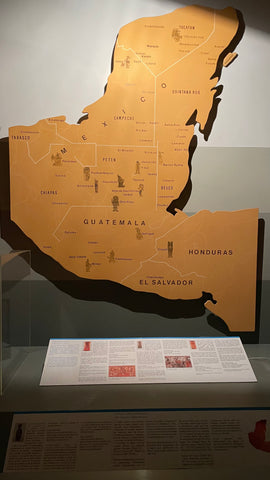
Cacao in Ancient Mesoamerica: A Treasure Trove of Symbolic Meanings, Sacred Rites and Medicinal Virtues
Cacao: A Journey Through Mesoamerican History
In the rich and fascinating history of Mesoamerican civilizations, including the Olmecs (circa 1400 BC - 400 BC), ancient Maya (circa 2000 BC - 1500 AD), Toltecs (circa 900 AD - 1168 AD) and Aztecs (circa 1300 AD - 1521 AD), cocoa has played a central role.
These civilizations created abundant cocoa-based beverages , both cold and hot, at different times in history, over the millennia. However, it is interesting to note that cocoa was not consumed in the form of solid chocolate, an invention that would not be created until after the invasion of the Spanish in Europe itself.
The predominant use of cocoa in Central America has always been in the form of a hot drink, often harking back to ancient traditions of water, cocoa, and corn. In southern Mexico, in particular, there are numerous cocoa-based beverages, including the famous "Pozol," a typical cocoa drink in the state of Chiapas.
However, Spanish colonization led to complex and often tragic developments, which contributed to the marginalization of the communities of the native peoples and caused the loss of much of their ancestral knowledge and traditions.
El Salvador, which was part of the western "Kingdom of Guatemala" between 1500 and 1800 AD, was among the main centers of cocoa cultivation in the entire kingdom. This area, known as Cuzcatlán, was known to produce large quantities of cocoa in the region of "Los Izalcos," home to the original people of Mayan and Mexica descent, the Nahua-Pipiles, who had cultivated native cocoa for centuries long before the arrival of the Spanish. Some archaeologists believe that criollo (genetically pure) cocoa may have been transported from the shores of El Salvador, through the port of Acajutla, to other Spanish colonies in South America. But this is a theory for the moment, there is not enough evidence to confirm it.
During the colonial period, cocoa was dried, toasted and ground into a coarse paste, using a tool called a "metate," the same one used to grind corn. This cocoa paste was then mixed with water, corn, vanilla, chili peppers and other local spices, such as achiote, which gave the cocoa a blood-red color. It is important to note that, before the arrival of the Spanish, sugar was not part of this drink, as cane sugar came from India, and was still unknown to the Mesoamerican peoples who instead knew of honey or vanilla to sweeten cocoa.
The Spanish invasion, led by Hernán Cortés in 1518 AD, brought cocoa to Europe, where it aroused great interest in the royal courts for its supposed aphrodisiac and energetic properties. Cortés himself wrote a letter to Charles V, the king of Spain at the time, stating that cocoa could sustain a soldier's strength for an entire day and that it was a powerful "reconstituent."
It is said that the last Aztec emperor, Moctezuma II, drank at least 50 cups of cocoa a day to stimulate his libido. The aphrodisiac properties of cocoa have been known since ancient times. The Mayans, for example, celebrated puberty with rituals that included cocoa and scented water in the Yucatan region.
Many people mistakenly associate cocoa with the Mayans and Aztecs, but this is not the case. It is not only the Mayans who used cocoa: the Olmecs, for example, were growing and drinking cocoa as early as 1400 BC. Cocoa was considered sacred by many Mesoamerican peoples, and archaeological evidence suggests its use in this region since ancient times, this is due not only to the interpretation of Mayan writing, but also to the discovery of theobromine residues in some vases found in archaeological excavations in Mexico and also in El Salvador.
Note that " Mesoamerica " includes southern Mexico, Belize, Guatemala, El Salvador, Honduras, parts of Nicaragua, and Costa Rica, a region where some of the greatest pre-Columbian civilizations flourished.

Cacao was so important that, in the Popol Vuh , the sacred book of the Maya, it was considered one of the four cosmic trees located in the directions of the universe, making it a symbol of the "sacred" and the "divine."
Conclusions
Cacao has played a fundamental role in the history of Mesoamerican civilizations, influencing ceremonies, rituals, trade, and even the daily diet of people, even in the less wealthy social classes, as evidenced by Joya del Cerén in El Salvador. Its introduction to Europe began a new era in the history of chocolate. The history of cocoa is a fascinating tale of discoveries, traditions, and culture that spans centuries and continents.

Photo: Moctezuma II, the last Aztec King in his meeting with Hernán Cortés before he was killed by the latter's troops, thus ending the Aztec Empire.

Photo: Tazumal - Mayan archaeological complex - El Salvador Sources: UNAM, Mexico Encyclopedia Britannica Mayan image cc: University of Oregon Evidence of the use of cocoa El Salvador Mayan site Joya del Cerèn

